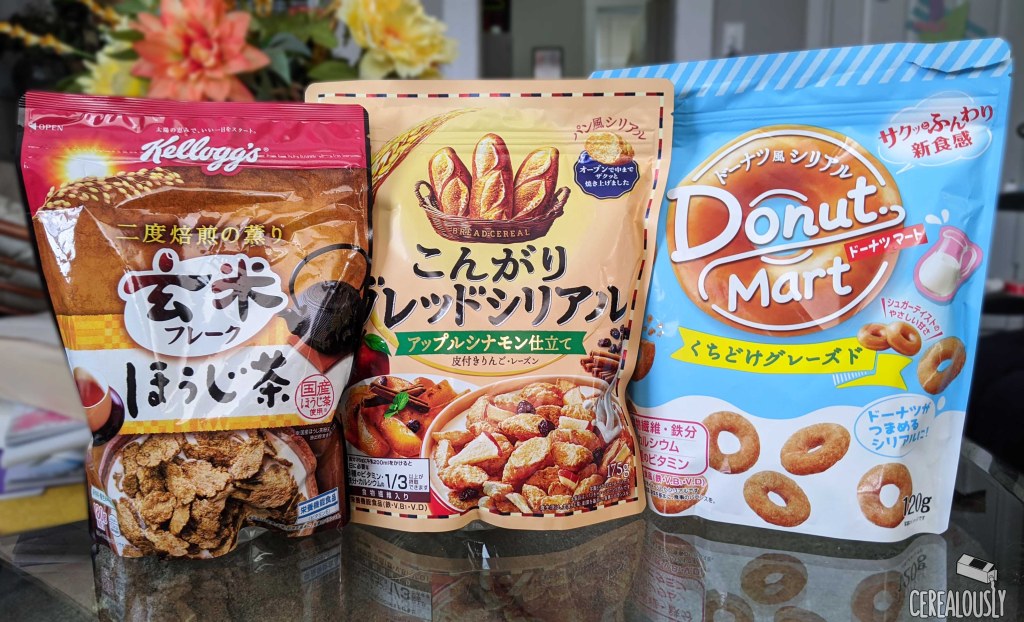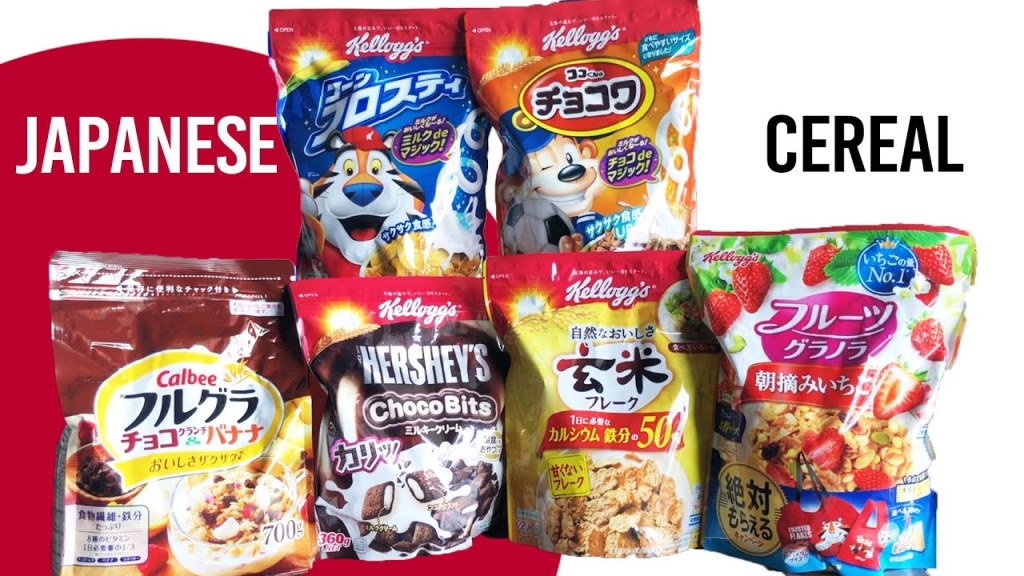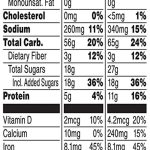Discover The Exquisite Taste Of Cereal In Japanese – Unleash Your Breakfast Adventure!
Cereal in Japanese: A Taste of Tradition and Innovation
Welcome, Cereal Connoisseur, to the world of Japanese cereals where tradition and innovation blend harmoniously to create a unique breakfast experience. In this article, we will explore the rich history and cultural significance of cereal in Japan, as well as the diverse flavors and nutritional benefits it offers. Whether you are a fan of traditional breakfast options or seeking to broaden your cereal horizons, join us on this flavorful journey through the land of the rising sun.
Table of Contents
Introduction
What is Cereal in Japanese?
Who Consumes Japanese Cereal?
When Did Cereal Gain Popularity in Japan?
Where Can You Find Japanese Cereal?
Why Choose Japanese Cereal?
How is Japanese Cereal Made?
Advantages and Disadvantages of Japanese Cereal
FAQs
Conclusion
Final Remarks
2 Picture Gallery: Discover The Exquisite Taste Of Cereal In Japanese – Unleash Your Breakfast Adventure!


1. Introduction

Image Source: cerealously.net
Japanese cuisine is renowned for its diversity and attention to detail, and breakfast is no exception. While rice and miso soup traditionally dominate Japanese breakfast tables, the introduction of cereal has influenced the morning routines of many Japanese households. The popularity of cereal in Japan has grown steadily over the years, offering a convenient and nutritious alternative to the traditional breakfast options. In this section, we will delve into the history and cultural significance of cereal in Japanese society, setting the stage for a deeper exploration of this cereal revolution.
Japan’s love affair with cereal began in the late 19th century when Western influences started permeating Japanese culture. As international trade expanded, so did the variety of foods available in Japan. Cereal, with its easy preparation and versatility, quickly gained traction among the local population. Today, Japanese cereals come in a wide range of flavors, textures, and nutritional compositions, catering to the diverse tastes and dietary preferences of the populace.

Image Source: ytimg.com
Whether you’re a traditionalist preferring a comforting bowl of rice or an adventurous soul ready to embrace new flavors, Japanese cereal offers something for everyone. So, grab your spoon and join us as we uncover the secrets of cereal in Japan.
Now, let’s dive into the world of Japanese cereal and explore its origins, consumption patterns, availability, benefits, and more.
2. What is Cereal in Japanese?
Cereal in Japanese refers to a range of breakfast cereals produced and consumed in Japan. These cereals differ from their Western counterparts in terms of flavors, ingredients, and cultural context. While Western cereals often feature sweet flavors and vibrant colors, Japanese cereals embrace a more subtle and diverse flavor profile.
Japanese cereal manufacturers pay great attention to quality, sourcing fresh and local ingredients to provide a unique taste experience. The flavors range from traditional options such as rice, barley, and soy to more contemporary choices like matcha (green tea), black sesame, and even savory options like nori (seaweed) or miso. This wide variety ensures that there is a cereal to suit every palate.
In addition to the flavors, Japanese cereals also offer various textures, ranging from crunchy and puffed to chewy and granola-like. This diversity adds a delightful element to breakfast, making each bite a sensorial adventure.
Now that we have a general understanding of what Japanese cereal is, let’s explore who consumes it.
3. Who Consumes Japanese Cereal?
Cereal in Japan is consumed by a wide range of individuals, from children to adults, who value convenience, nutrition, and taste. Japanese cereals are particularly popular among busy urban dwellers who appreciate the quick and effortless preparation time they offer. In a society known for its fast-paced lifestyle, cereal provides a balanced and efficient breakfast option.
Parents also find Japanese cereal appealing as it caters to their children’s taste preferences while offering nutritional value. Many cereals are fortified with essential vitamins and minerals, ensuring that growing bodies receive the necessary nutrients to start the day.
Regardless of age or lifestyle, Japanese cereal appeals to those seeking a convenient and nutritious breakfast option that still embodies the essence of Japanese cuisine. In the next section, we will explore when cereal gained popularity in Japan.
4. When Did Cereal Gain Popularity in Japan?
The popularity of cereal in Japan began to rise in the 1960s, with the introduction of American and European cereal brands. As Japanese society embraced Western influences, cereal quickly became a symbol of modernity and convenience.
The convenience aspect played a significant role in the rapid adoption of cereal among urban families. Japan’s economic growth during this period led to an increase in dual-income households, leaving less time for elaborate breakfast preparations. Cereal offered a quick and easy solution while still providing a satisfying and nutritious start to the day.
Over time, Japanese cereal manufacturers began to innovate and create their own unique flavors and textures, catering to the evolving tastes of consumers. Today, cereal has firmly established itself as a staple in many Japanese households, balancing tradition with innovation.
As cereal gained popularity, its availability expanded, allowing consumers to easily find a wide variety of options at local supermarkets, convenience stores, and online platforms. In the next section, let’s explore the diverse sources where you can find Japanese cereal.
5. Where Can You Find Japanese Cereal?
Japanese cereal is readily available in various retail outlets, making it easily accessible to a wide range of consumers. Supermarkets, convenience stores, and online platforms are the primary sources for purchasing Japanese cereals.
Supermarkets offer a wide selection of Japanese cereal brands, both local and international. From large supermarket chains to smaller neighborhood stores, you are likely to find a dedicated section showcasing an array of cereals. These supermarkets often provide detailed information about each product, helping consumers make informed decisions based on their individual preferences and dietary needs.
Convenience stores, commonly found on almost every street corner in Japan, also stock a range of cereals. These stores cater to busy individuals who prefer quick and convenient shopping experiences. While the variety might be slightly more limited compared to supermarkets, convenience stores offer the advantage of extended operating hours and easy accessibility.
For those who prefer the convenience of online shopping, numerous e-commerce platforms provide a vast selection of Japanese cereals. With just a few clicks, you can have your favorite cereals delivered straight to your doorstep, ensuring a hassle-free breakfast experience.
Now that we know where to find Japanese cereal, let’s explore why it is an excellent choice for breakfast.
6. Why Choose Japanese Cereal?
Japanese cereal offers numerous benefits that make it a compelling choice for breakfast. Here are some reasons why you might want to consider adding Japanese cereal to your morning routine:
Nutritional Value: Japanese cereals are often fortified with essential vitamins and minerals, providing a well-rounded start to the day. They offer a balance of carbohydrates, protein, and fiber, promoting sustained energy levels and aiding digestion.
Diverse Flavors and Textures: From traditional flavors like rice and barley to innovative options like matcha and black sesame, Japanese cereals cater to a wide range of taste preferences. The variety of textures adds a delightful crunch or chewiness to every bite.
Convenience: With hectic schedules becoming the norm, Japanese cereal offers a quick, ready-to-eat breakfast option. Just pour the cereal into a bowl, add milk or yogurt, and you’re ready to start your day.
Customizability: Japanese cereal allows for endless customization possibilities. Add fresh fruits, nuts, or seeds to enhance the nutritional value and flavor profile. You can create your own unique cereal bowl tailored to your preferences.
Cultural Experience: Exploring Japanese cereals allows you to immerse yourself in the rich culinary traditions of Japan. It provides an opportunity to embrace the country’s culture and culinary diversity, even during your morning routine.
While Japanese cereal offers numerous advantages, it’s essential to consider potential disadvantages as well. Let’s explore the pros and cons in the next section.
7. Advantages and Disadvantages of Japanese Cereal
Like any food product, Japanese cereal has its advantages and disadvantages. It’s crucial to consider these factors when deciding if Japanese cereal is the right choice for you.
Advantages:
Convenient and time-saving breakfast option for busy individuals
Offers a range of flavors and textures to suit diverse taste preferences
Many cereals are fortified with essential vitamins and minerals
Allows for customization and personalization based on individual preferences
Provides a cultural experience by embracing the culinary traditions of Japan
Disadvantages:
Some cereals may contain added sugars or artificial ingredients
May not provide the same level of satiety as a traditional Japanese breakfast
Limited availability of certain flavors or brands outside of Japan
May be more expensive compared to local breakfast options
Potential for overconsumption if portion sizes are not monitored
By considering these advantages and disadvantages, you can make an informed decision about whether Japanese cereal aligns with your dietary goals and lifestyle. If you have any specific questions about Japanese cereal, refer to the following FAQs and their corresponding answers.
8. FAQs
Q: Is Japanese cereal gluten-free?
A: Some Japanese cereals are gluten-free, but it’s essential to check the product labels as not all brands guarantee gluten-free options. Look for cereals made from gluten-free grains like rice or quinoa.
Q: Can Japanese cereal be eaten without milk?
A: Yes, Japanese cereal can be enjoyed without milk. Many people prefer to eat it with yogurt, soy milk, or even plain as a crunchy snack.
Q: Are Japanese cereals suitable for vegetarians or vegans?
A: Yes, there are plenty of vegetarian and vegan-friendly options available in Japanese cereals. Look for ingredients like nuts, seeds, dried fruits, or grains to ensure the cereal meets your dietary preferences.
Q: Can I find Japanese cereal outside of Japan?
A: While certain Japanese cereal brands have expanded their distribution globally, the availability may vary depending on your location. Online platforms dedicated to Japanese products or specialty Asian grocery stores are your best bet for finding a diverse selection.
Q: Can I make my own Japanese-inspired cereal at home?
A: Absolutely! With a little creativity, you can create your own Japanese-inspired cereal using traditional ingredients like rice, roasted grains, and flavorings like matcha or black sesame. Experiment with different combinations to find your perfect blend.
9. Conclusion
As we conclude our journey through the world of Japanese cereal, we hope you’ve gained a deeper understanding of this unique breakfast option. From its cultural significance to the diverse flavors and textures available, Japanese cereal encompasses tradition, innovation, and convenience.
Whether you’re a Cereal Enthusiast looking to expand your breakfast repertoire or an adventurous foodie seeking new taste experiences, Japanese cereal offers a delightful and nutritious way to start your day. So, grab a box of your favorite flavor, pour a bowlful, and savor the flavors of Japan in every bite.
10. Final Remarks
Disclaimer: While every effort has been made to ensure the accuracy and completeness of the information provided in this article, it is for educational and informational purposes only. The information presented should not be considered as dietary advice or a substitute for professional medical advice. Please consult a qualified healthcare professional before making any changes to your diet or lifestyle.
Remember to enjoy Japanese cereal in moderation as part of a balanced diet. Pay attention to portion sizes, read product labels for potential allergens or dietary restrictions, and listen to your body’s needs.
Thank you for joining us on this flavorful journey through cereal in Japanese. We hope this article has inspired you to explore the world of Japanese cereals and discover new breakfast possibilities.
This post topic: Cereal



